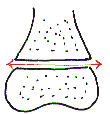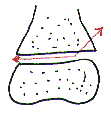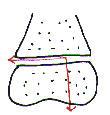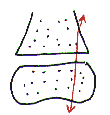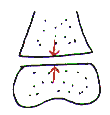
|
|||||||
Epiphyseal Injuries
What are epiphyseal injuries?
Epiphyseal injuries are injuries that occur at the epiphyseal plate or growth plate of children and adolescents. They commonly occur near the major joints of the limbs, especially the knee, ankle, elbow and wrist.
Doctors Salter and Harris first classified these injuries according to the pattern on X-ray appearance, which also corresponded to their severity. This is the classification that is most commonly used when describing epiphyseal injuries. The Salter and Harris classification of epiphyseal injuries is as follows.
|
|
What does your doctor do about it?
X-rays are done to rule out epiphyseal injuries, in children with injuries to their bones near joints. If there is displacement of the fracture, the diagnosis is usually quite obvious. If there is no displacement, especially in the Type I and V injuries, the diagnosis may be made clinically rather than on X-rays.
Type I and II injuries respond well to closed reduction if displaced, and cast immobilization. Type III and IV injuries, if displaced, usually require open reduction and internal fixation to obtain a good result. Type V injuries need to be watched over time. If deformities arise with growth, surgical correction may be needed.
NOTICE: The information presented is for your information only, and not a substitute for the medical advice of a qualified physician. Neither the author nor the publisher will be responsible for any harm or injury resulting from interpretations of the materials in this article.
Questions
or comments? Post your thoughts in the Orthoseek
Message Forum!
Find a pediatric orthopedic surgeon
in an area near you.
Home | About Us | Orthopaedic Topics | Message Forum
![]()
Comments, questions, or suggestions are welcome. Please
contact us using this form.
